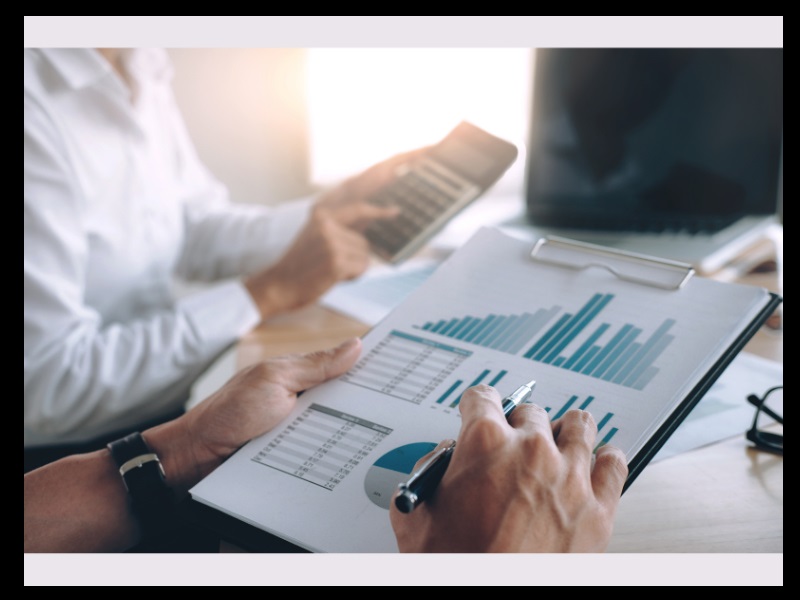In today’s interconnected global economy, commodity trading plays a crucial role in driving growth and ensuring economic stability. At the heart of this trading lies the commodity exchange ,a vital component of the financial system, facilitating the seamless buying and selling of raw materials and primary goods. The objective of this blog is to navigate the intricate world of commodity trading, shedding light on its immense significance, the various types of commodities, and the unique characteristics that set each type apart. From energy resources to metals and agricultural products, the diverse range of commodities contributes to the intricacies of the market. Furthermore, this blog will delve into essential aspects such as risk management, hedging strategies, and portfolio diversification to navigate the challenges inherent in commodity trading. Moreover, with the growing importance of sustainable commodities, we will explore the emergence of environmentally conscious trading practices and the role of ESG criteria in shaping commodity markets. By comprehending these complexities and trends, traders and investors can seize opportunities and make informed decisions in the ever-evolving world of commodity trading.
Importance of Commodity Trading in the Global Economy:
Commodity trading is of paramount importance to the global economy. It serves as the foundation of many industries, impacting everything from manufacturing to agriculture. Commodities are the lifeblood of economic activities, and their prices can significantly influence inflation rates and overall economic growth. Moreover, commodity trading offers opportunities for investors to diversify their portfolios, as commodities often exhibit different behaviour compared to traditional financial assets.
Types of Commodities:
Commodities can be categorised into three main groups: energy, metals, and agricultural products. The energy sector covers a wide range of resources, including crude oil, natural gas, coal, and renewable energy sources. Metals, on the other hand, encompass both precious metals like gold, silver, and platinum, as well as industrial metals such as copper, aluminium, and iron ore. Lastly, agricultural products constitute crops like wheat, corn, soybeans, as well as livestock such as cattle and hogs. These classifications are vital in understanding the diverse nature of commodities traded in the market. Each category represents a distinct set of commodities with unique characteristics and market influences. Traders and investors need to grasp these differences to make informed decisions and effectively manage their positions in the ever-fluctuating world of commodity trading. By recognizing the significance of each commodity type, market participants can navigate the complexities of the commodity exchange and harness its potential for financial growth and stability.
Understanding the Unique Characteristics of Each Commodity Type:
Each type of commodity exhibits distinct characteristics that impact its market dynamics. Energy commodities are influenced by geopolitical events, weather conditions, and technological advancements. Metals, on the other hand, are sensitive to industrial demand, supply disruptions, and changes in global trade policies. Agricultural commodities are heavily influenced by weather patterns, crop diseases, and shifts in consumer preferences.
The Commodity Market and Risk Management:
Commodity trading is not without risks. Understanding and managing these risks is essential for successful trading. Various risks, such as price volatility, supply chain disruptions, and geopolitical tensions, can affect commodity prices. Traders employ different risk management techniques, including hedging strategies, to protect their positions from adverse market movements.
- Identifying and Assessing Commodity Market Risks:
A comprehensive risk assessment is crucial before entering the commodity market. Traders need to analyse factors like global demand and supply imbalances, weather patterns, political stability, and regulatory changes. Additionally, they must keep a close eye on technological advancements and their potential impact on specific commodities.
- Hedging Strategies to Mitigate Risks:
Hedging is a commonly used technique to mitigate commodity market risks.For instance, producers may use futures contracts to lock in prices for their products, while consumers can do the same to secure their supply at predictable costs.
- Diversification and Portfolio Management:
Diversification is an essential aspect of managing commodity trading risks. By spreading investments across various commodities, traders can reduce their exposure to any single market’s fluctuations. Additionally, maintaining a well-balanced portfolio that includes a mix of commodities and other assets can help achieve more stable returns.
Sustainable and Green Commodities:
In recent years, sustainable commodities have gained significant importance in the market. Consumers and investors alike are increasingly conscious of environmental and social impacts. Sustainable commodities, produced using eco-friendly practices and ethical labour, are becoming more sought after. Trading such commodities presents both opportunities and challenges, as demand for sustainable products continues to grow.
- Opportunities and Challenges in Trading Sustainable Commodities:
The rise of sustainable commodities opens doors for new trading opportunities. However, challenges exist, such as ensuring transparency in supply chains and defining standardised criteria for sustainability. Additionally, navigating through complex regulations and market dynamics can be daunting.
Commodity Trading Platforms:
Commodities can be broadly grouped into three primary categories, namely energy, metals, and agricultural products. Within the energy sector, one can find a diverse array of resources such as crude oil, natural gas, coal, and renewable energy sources. Metals encompass both precious and industrial metals, including gold, silver, platinum, copper, aluminium, and iron ore. Understanding these classifications is vital as they shed light on the distinct nature of commodities traded in the market. Each category holds its own unique characteristics and is influenced by specific market dynamics. Traders and investors must grasp these differences to make well-informed decisions and effectively manage their positions amidst the ever-changing landscape of commodity trading. By recognizing the significance of each commodity type, market participants can navigate the complexities of the commodity exchange and leverage its potential for fostering financial growth and stability..
Global Trends in Commodities:
Global economic shifts and geopolitical events heavily influence commodity trends. Emerging economies present new opportunities for commodity trading, as demand for resources grows. Additionally, technological advancements, such as blockchain and AI, are transforming commodity markets, enhancing transparency and efficiency.The commodity market remains dynamic and ever-evolving. Keeping an eye on emerging trends, such as the adoption of sustainable practices and advancements in technology, will be crucial for successful trading in the future.
In drawing this journey through the realm of commodities to a close, it becomes evident that comprehending its intricacies holds immense significance. Whether you are an experienced trader or a hopeful investor, the acquired insights should serve as a driving force to apply this newfound knowledge in your endeavours within the realm of commodity trading. Embracing a deep understanding of the complexities within the commodity market empowers individuals to make well-informed decisions and remain adaptable amidst the ever-evolving global trade and financial landscape, especially with the convenience of utilising mobile trading apps.
By staying attuned to market dynamics and being cognizant of various risk management strategies, traders can position themselves advantageously in the face of uncertainties, leveraging the ease and accessibility of mobile trading apps. Additionally, recognizing the growing importance of sustainable commodities and adhering to ESG criteria can lead to responsible and ethical trading practices, all of which can be conveniently managed through mobile trading apps. As the world continues to witness emerging opportunities in developing economies and technological advancements reshape the commodity markets, the application of acquired knowledge, with the aid of mobile trading apps, becomes an essential asset in seizing these prospects and navigating future trends with confidence.






